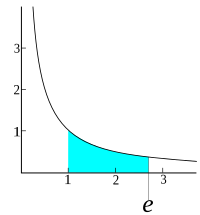
Photo from wikipedia
Background This study aimed to evaluate the efficacy, stability, and safety of computer-assisted microcatheter shaping (CAMS) in patients with intracranial aneurysms. Methods A total of 201 patients with intracranial aneurysms… Click to show full abstract
Background This study aimed to evaluate the efficacy, stability, and safety of computer-assisted microcatheter shaping (CAMS) in patients with intracranial aneurysms. Methods A total of 201 patients with intracranial aneurysms receiving endovascular coiling therapy were continuously recruited and randomly assigned to the CAMS and manual microcatheter shaping (MMS) groups. The investigated outcomes included the first-trial success rate, time to position the microcatheter in aneurysms, rate of successful microcatheter placement within 5 min, delivery times, microcatheter stability, and delivery performance. Results The rates of first-trial success (96.0% vs 66.0%, P<0.001), successful microcatheter placement within 5 min (96.04% vs 72.00%, P<0.001), microcatheter stability (97.03% vs 84.00%, P=0.002), and ‘excellent’ delivery performance (45.54% vs 24.00%, P<0.001) in the CAMS group were significantly higher than those in the MMS group. Additionally, the total microcatheter delivery and positioning time (1.05 minutes (0.26) vs 1.53 minutes (1.00)) was significantly shorter in the CAMS group than in the MMS group (P<0.001). Computer assistance (OR 14.464; 95% CI 4.733 to 44.207; P<0.001) and inflow angle (OR 1.014; 95% CI 1.002 to 1.025; P=0.021) were independent predictors of the first-trial success rate. CAMS could decrease the time of microcatheter position compared with MMS, whether for junior or senior surgeons (P<0.001). Moreover, computer assistance technology may be more helpful in treating aneurysms with acute angles (p<0.001). Conclusions The use of computer-assisted procedures can enhance the efficacy, stability, and safety of surgical plans for coiling intracranial aneurysms.
Journal Title: Journal of NeuroInterventional Surgery
Year Published: 2023
Link to full text (if available)
Share on Social Media: Sign Up to like & get
recommendations!